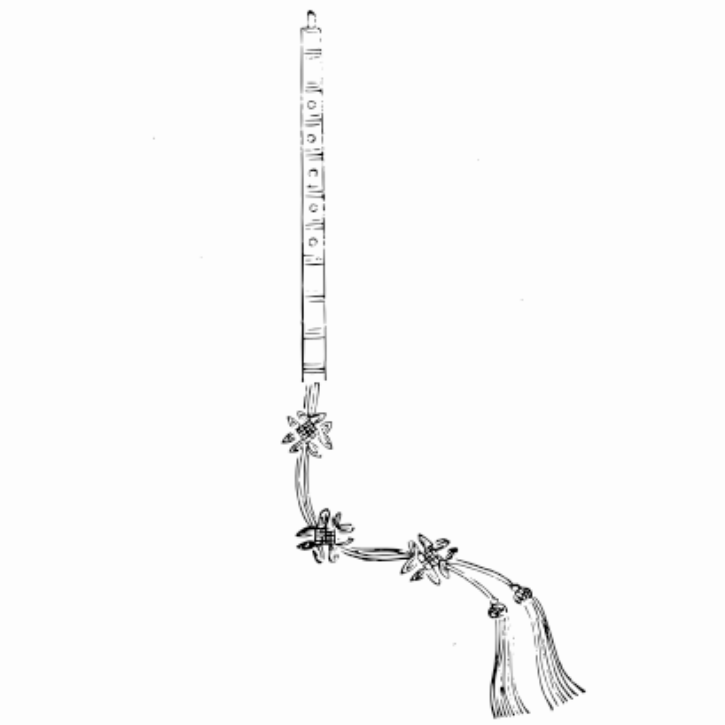Documentation of pipes
919 views · Organized by 赵锦辛 on 2022-03-15
Guanzi, anciently known as bi li , jia guan. In ancient times, there was a kind of wind instrument called "pipe". "Book of Songs, Zhou Song, You Gu": "If you are prepared, you will play, and the flute tube will be prepared." "Erya Shile": "The big tube is called the posthumous title." "Shuowen Jiezi": "Guan Ruchi, six holes".
"Book of Songs, Records of Music": "...Cai Yong said in a sentence, 'The person who manages is long, long, and wide, with holes and no bottom'. His utensils are dead today." Such tubes have long been lost. The Yungang Grottoes excavated since the Northern Wei Dynasty have the image of blowing pipes.
Tang Li Qi's "Listening to An Wanshan's Song of Blowing the Brick": "The Nanshan Cuts the Bamboo as the Brick". Bai Juyi's "Children Xue Yang's Tao Chui Yu Song": "Cut the dry reeds and insert the cold bamboos". Song "Book of Music": "Zhuji, ... with bamboo as the tube and reed as the head".
"Yuan Shi·Rite and Music Records": "The instrument of Yan music is controlled by the head, with bamboo as the tube, rolled reed leaves as the head, and seven orifices". In the Ming Dynasty, the body of the tube was changed to wood. "Ming Hui Dian Dale System": "The head tube is made of wood..., the two ends are bundled with teeth, and the reed is used as a whistle". The sound of the wooden pipe is more honest. During the Ming and Qing dynasties, pipes were widely popular among the people.
"Book of Songs, Records of Music": "...Cai Yong said in a sentence, 'The person who manages is long, long, and wide, with holes and no bottom'. His utensils are dead today." Such tubes have long been lost. The Yungang Grottoes excavated since the Northern Wei Dynasty have the image of blowing pipes.

Tang Li Qi's "Listening to An Wanshan's Song of Blowing the Brick": "The Nanshan Cuts the Bamboo as the Brick". Bai Juyi's "Children Xue Yang's Tao Chui Yu Song": "Cut the dry reeds and insert the cold bamboos". Song "Book of Music": "Zhuji, ... with bamboo as the tube and reed as the head".
"Yuan Shi·Rite and Music Records": "The instrument of Yan music is controlled by the head, with bamboo as the tube, rolled reed leaves as the head, and seven orifices". In the Ming Dynasty, the body of the tube was changed to wood. "Ming Hui Dian Dale System": "The head tube is made of wood..., the two ends are bundled with teeth, and the reed is used as a whistle". The sound of the wooden pipe is more honest. During the Ming and Qing dynasties, pipes were widely popular among the people.
Involving musical instruments
Guanzi (pinyin: guǎn zi) is a wind instrument. In ancient China, it was called "筚篥" or "Luguan". Its structure consists of three parts: the whistle, the intruder and the cylindrical body.
Guess you like
Organized by 南丘 on 2022-03-31
Every morning, before 8 o’clock, the sound of the pipe will sound on time in the piano room 418 of the Qinfang Building of the Central Conservatory of Music. This is Hu Zhihou, a professor of the Folk Music Department of the Central Conservatory of Music, a pipe player and an educator, who is over 70 years old.
read >>
Organized by 雨童 on 2022-03-21
Bai folk instrumental music mainly includes sanxian music, suona wind and percussion music, cave scripture music, etc. In addition, there are also ancient music and tunes played by bamboo flute, mouth spring, wood leaf and so on.
read >>
Organized by 向日葵 on 2022-03-15
In March, another national event will bloom in Zhengzhou. The 2022 China Intangible Cultural Heritage Protection Annual Conference will be held in Zhengzhou from March 21 to 24.
read >>
Organized by 八日蝉 on 2022-03-10
On March 5th, the Yuhang District Grassroots Committee of the Civil Revolutionary Committee and Ding Zhigang Bamboo Flute Studio jointly launched a public welfare classroom activity of "Promoting Lei Feng Spirit and Inheriting Bamboo Flute Culture" in Zijing Village, Zhongtai Street.
read >>
Organized by 夏浩东 on 2022-01-25
Feitian or Bodhisattva hands in Mogao Grottoes in Dunhuang
Those exquisite musical instruments that seem familiar but cannot be named,
What are their real bodies?
Are they still alive?
What would it sound like if it was recovered?
read >>
 渝公网安备 50010702504639号
渝公网安备 50010702504639号